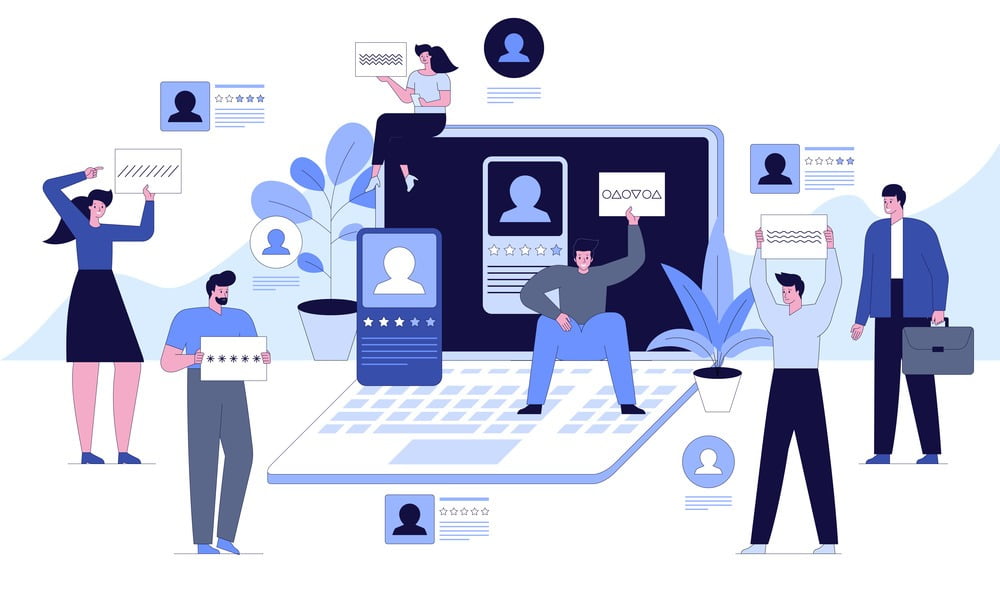Digital Employee Experience (DEX) is crucial today because the modern workplace is becoming increasingly digital. As businesses adopt new digital tools and systems to manage their operations, it is essential that employees have positive experiences with these tools. This is particularly important because employees spend a significant portion of their time at work using digital technologies.
The importance of DEX today cannot be overstated. In a world where technology is becoming increasingly prevalent in the workplace, businesses must prioritize creating the right digital experience for their employees. By doing so, they can improve productivity/engagement, attract and retain top talent, and ultimately achieve long-term success.
Related blog: Digital Employee Experience Strategies for 2023
What is Digital Employee Experience (DEX)?
Digital Employee Experience (DEX) refers to the overall experience that employees have with digital tools and systems in the workplace. It encompasses all aspects of technology that employees interact with, including hardware, software, applications, and communication platforms. DEX is an important concept because it directly impacts employee productivity, engagement, and job satisfaction.
The concept of DEX emerged from the growing trend of digital transformation in the workplace. As businesses increasingly rely on digital technologies to manage their operations, it has become essential to ensure that employees have great experience with these tools. DEX is the solution to this challenge.
Importance of Digital Employee Experience
The back story of why Digital Employee Experience (DEX) is crucial can be traced back to the emergence of the digital workplace. Over the past few decades, technology has rapidly evolved, leading to the integration of digital tools and systems in the workplace. These digital tools and systems have transformed the way employees work, communicate, and collaborate with each other.
However, with the integration of digital tools and systems came new challenges. Employees struggled with the complexity and inefficiencies of the new tools and systems, leading to frustration, disengagement, and decreased productivity. As a result, businesses began to realize the importance of providing an effective digital experience for their employees.
The concept of DEX emerged as a solution to the challenges of the digital workplace. DEX is a holistic approach that focuses on providing employees with seamless digital experience across all digital touchpoints. This includes digital tools and systems such as software applications, collaboration tools, and communication platforms.

The need for DEX became even more crucial with the rise of remote work due to the COVID-19 pandemic. With many employees working from home, the digital experience became even more critical in ensuring that employees remained engaged, productive, and connected to their colleagues and the organization.
Today, businesses are investing heavily in DEX initiatives. This includes designing user-friendly interfaces, simplifying processes, and providing personalized experiences. DEX initiatives are also focused on enhancing collaboration and communication, as well as ensuring that employees have access to the right tools and systems to perform their jobs effectively.
Five Examples of Digital Employee Experiences
User-friendly interfaces
A user-friendly interface is one of the key components of DEX. This includes intuitive navigation, clear labeling, and easy-to-use design elements. For example, a company might invest in an employee portal that is easy to navigate and provides a personalized experience based on the user’s role and responsibilities.
Mobile access
Employees today expect to be able to access digital tools and systems from their mobile devices. Providing mobile access to critical systems and applications is a key component of DEX. This might include developing mobile applications or optimizing existing systems for mobile access.
Collaboration tools
Collaboration tools such as video conferencing, instant messaging, and document sharing are essential. These tools enable employees to communicate and collaborate with each other, regardless of their physical location. For example, a company might invest in a video conferencing system that provides high-quality audio and video, as well as the ability to share documents and screen sharing.
Personalization
Personalization is another important component of DEX. This might include customizing the employee portal based on the user’s role and responsibilities or providing personalized training and development opportunities based on the employee’s interests and career goals.
Digital training and development
Digital training and development opportunities include online training modules, virtual coaching and mentoring, and digital performance support tools. For example, a company might invest in an online training platform that provides employees with on-demand access to training modules, as well as the ability to track their progress and earn certifications.
What are the 9 Benefits of Improving Your Digital Employee Experience?
Here are ten benefits of improving your employee digital experience:
- Increased productivity: When employees are better able to navigate and use digital tools and systems, it can result in higher output and more efficient workflows.
- Higher employee engagement: When employees can easily collaborate and communicate with each other – triggering a greater sense of belonging and connection to the organization.
- Enhanced employee satisfaction: DEX can lead to greater employee satisfaction as employees are better able to use the tools and systems they need to do their jobs – resulting in greater job satisfaction and overall happiness at work.
- Increased agility: By increasing organizational agility to adapt to changing business needs, it becomes easier to quickly deploy new tools and systems or pivot to new business models.
- Better customer experience: The fact is that digitally empowered employees deliver high-quality service. This can grow customer satisfaction and loyalty.
- Reduced training costs: A high level of DEX can reduce training costs by making it easier for employees to learn new tools and systems. This can lead to faster onboarding and more efficient training processes.
- Greater innovation: When there’s innovation, employees are better able to collaborate and share ideas with each other. So, the organization can develop better products and services or improve their business processes.
- Proactive risk management: Risk management gets improved by making it easier to digitally comply with regulations and policies. This includes ensuring that employees have access to the right tools and systems to maintain data security and privacy.
- Better employer branding: DEX can enhance the employer brand by making the organization an attractive place to work. This can help attract and retain top talent and improve the organization’s reputation in the market.
Challenges of Investing in Digital Employee Experience

Complexity of technology
One of the biggest challenges is the complexity of the technology involved. DEX encompasses a wide range of tools and systems, and implementing these tools can be a complex and time-consuming process. Organizations must be prepared to invest in the necessary technology and infrastructure to support DEX.
Resistance to change
Another challenge is resistance to change from employees. Employees may be resistant to new tools and systems, or may not see the value. It is important for organizations to effectively communicate the benefits of DEX to employees and engage them in the process.
Lack of resources
Implementing DEX can be resource-intensive, and organizations may not have the necessary resources to invest in DEX. This includes both financial resources and human resources. Organizations must be prepared to allocate the necessary resources to support DEX.
Integration with existing systems
DEX must be integrated with existing systems and workflows in order to be effective. This can be a complex process, particularly for organizations with legacy systems or complex workflows. Organizations must be prepared to invest in the necessary integration and customization.
Data privacy and security
DEX involves the use of sensitive employee data, which must be protected in order to maintain data privacy and security. Organizations must invest in the necessary security measures to protect employee data, including encryption and access controls.
Lack of metrics
Measuring the effectiveness of DEX can be a challenge, particularly if organizations do not have a clear set of metrics to measure success. Organizations must be prepared to invest in metrics and analytics to measure the impact of DEX on employee engagement, productivity, and other key areas.
Culture change
Implementing DEX may require a culture change within the organization. This may involve a shift in leadership style, or a change in the way employees are trained and managed. So, organizations must be prepared to invest in the necessary cultural changes.
Lack of expertise
DEX requires specialized expertise, including knowledge of user experience design, data analytics, and digital systems. Organizations may not have the necessary expertise in-house – and may need to invest in outside consultants or training programs.
Related article: How ITSM Can Transform the Digital Experiences of Employees
Final Note
Digital employee experience (DEX) is becoming an increasingly important aspect of business operations, particularly in the age of remote work and digital transformation. As organizations shift towards a more digital and mobile workforce, they must ensure that employees have the tools and systems necessary to be productive and engaged in their work.
Investing in DEX can be a challenging process, as it involves a range of complex technologies, cultural changes, and resource investments. To overcome the challenges of investing in DEX, organizations must be prepared to invest in the necessary technology and infrastructure, engage employees in the process, allocate resources, integrate with existing systems, protect data privacy and security, measure metrics, embrace cultural change, and acquire specialized expertise.
As the digital landscape continues to evolve, organizations that invest in DEX will be better positioned to attract and retain top talent, increase employee productivity and engagement, and drive business success in a rapidly changing world.






















